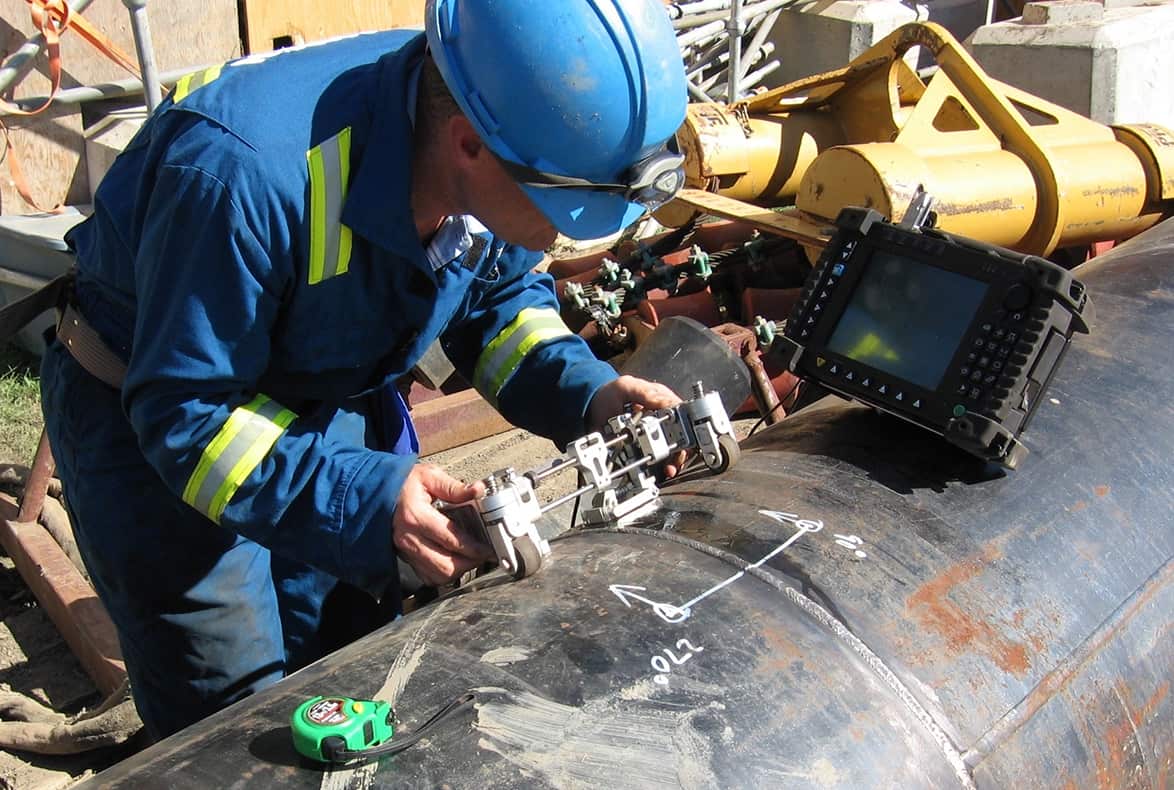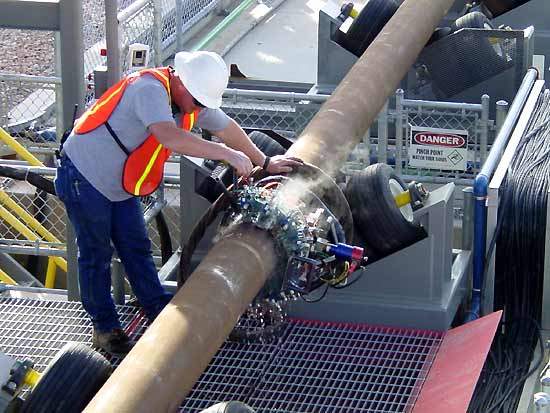
Finest Practices for Pipe Welding Examination: Techniques, Requirements, and Treatments to Achieve Quality Control and Compliance
Effective pipe welding examination is essential for making sure the stability and security of essential facilities. Understanding the complexities included in each stage of inspection is essential to achieving conformity and reliability in pipeline systems.
Importance of Welding Inspection
The honesty of bonded joints is vital in making sure the safety and security and dependability of pipeline systems. Proper welding strategies and complete evaluation procedures are critical to avoid failings that can cause devastating incidents, ecological damages, and loss of life. Pipeline Welding Inspection. Welding evaluation works as a safety net, determining defects such as splits, porosity, and incomplete fusion prior to they escalate right into major issues
Moreover, pipe systems typically operate under high pressure and extreme problems, making the top quality of welds even extra vital. Regulative conformity is one more substantial element, as numerous requirements dictate the high quality assurance procedures that must be complied with in pipeline building and construction and maintenance. Failure to comply can lead to legal ramifications and economic losses.

The role of welding assessment expands beyond simple confirmation of workmanship; it incorporates the guarantee of lasting functional integrity. This includes an organized method that consists of not just aesthetic examinations however also advanced non-destructive screening approaches. Eventually, effective welding examination is a financial investment in the durability and security of pipeline systems, ensuring they operate as meant while lessening threats connected with material deficiencies.
Trick Evaluation Methods

Visual assessment, frequently the initial line of defense, permits the identification of surface flaws such as cracks, undercuts, and porosity. Ultrasonic screening employs high-frequency acoustic waves to detect interior problems, offering a complete assessment of weld stability. This non-destructive approach is particularly efficient for identifying gaps that may not show up externally.
Radiographic screening involves making use of X-rays or gamma rays to create photos of the bonded joint, revealing internal defects. This method supplies comprehensive insights yet may require specialized tools and safety considerations. Lastly, magnetic bit testing works for detecting surface area and near-surface discontinuities in ferromagnetic materials, utilizing electromagnetic fields and fine iron particles.
Industry Specifications and Laws
Conformity with sector criteria and guidelines is essential for making certain the quality and security of pipeline welding assessments. These standards offer a structure for best techniques in welding processes, materials, and examination techniques, permitting companies to minimize issues and improve the stability of pipeline systems. Trick bodies such as the American Society of Mechanical Designers (ASME), the American Welding Society (AWS), and the International Company for Standardization (ISO) state guidelines that are widely recognized and taken on within the market.
In the United States, laws from the Pipeline and Hazardous Products Security Management (PHMSA) regulate the safety and security of pipe procedures, mandating extensive inspection methods. These standards not just serve to safeguard public safety and security and the atmosphere however additionally make sure compliance with contractual and lawful obligations. Adherence to the pertinent codes, such as ASME B31.3 for process piping, is essential for preserving operational effectiveness and governing compliance.
In addition, continuous updates and modifications to these requirements reflect technological innovations and developing sector practices, highlighting the demand for organizations to remain educated and train employees as necessary. Ultimately, robust compliance with well-known criteria fosters trust and reliability in pipe facilities, guarding both stakeholders and assets.
Efficient Examination Treatments
Effective examination procedures are important for recognizing prospective issues in pipe welds and ensuring the general honesty of the system. An organized approach to evaluation includes numerous vital stages, consisting visit this site right here of pre-weld, in-process, and post-weld inspections. Each phase plays a vital role in maintaining high quality guarantee.
Throughout pre-weld assessment, it is necessary to review the products and joint arrangements, making certain conformity with project specifications. In-process inspections involve keeping track of welding techniques and specifications, such as heat input and travel rate, to prevent defects from occurring. This phase enables real-time changes to welding practices.
Post-weld inspections consist of non-destructive testing (NDT) strategies like radiography, ultrasonic screening, and magnetic bit testing. These approaches aid find interior and surface imperfections that might jeopardize the pipeline's functionality. Documentation of all evaluation tasks is extremely important, giving a traceable record that sustains compliance with market standards.
Educating and certification of evaluation workers even more boost the performance of these procedures. By adhering to a structured inspection procedure, companies can alleviate dangers, ensure compliance, and ultimately deliver pipelines that satisfy stringent safety and efficiency requirements.
Usual Challenges and Solutions
Pipe welding evaluation presents several typical difficulties that can influence the quality and security of the end product. One significant difficulty is the variability in welding methods and products, which can bring about irregular weld high quality. To address this, it is essential to develop standardized treatments and training for welders, making certain an uniform approach across jobs.

Ecological elements, including temperature her latest blog level and moisture, can also influence the welding procedure, potentially leading to fractures or incomplete blend. Carrying out controlled environments and sticking to pre-weld procedures can minimize these risks.
Verdict
To conclude, the implementation of ideal techniques for pipe welding inspection is vital for making certain top quality assurance and conformity with industry requirements. An extensive method, including various strategies such as visual, ultrasonic, and radiographic screening, facilitates the identification of issues throughout all phases of the welding process. Pipeline Welding Inspection. Adherence to developed regulations and efficient examination procedures not only boosts the reliability and security of pipeline systems yet also alleviates threats related to welding flaws, therefore promoting general functional integrity
Compliance with market criteria and regulations is important for ensuring the quality and security of Our site pipe welding evaluations. These standards offer a framework for ideal methods in welding processes, products, and examination methods, permitting organizations to minimize problems and enhance the stability of pipeline systems.In the United States, guidelines from the Pipe and Hazardous Products Security Administration (PHMSA) regulate the security of pipeline operations, mandating extensive assessment procedures. A methodical strategy to inspection encompasses several crucial phases, including pre-weld, in-process, and post-weld evaluations.In final thought, the execution of ideal techniques for pipeline welding assessment is necessary for making certain high quality assurance and compliance with market requirements.